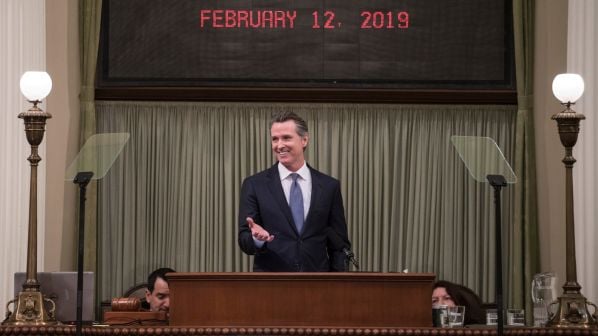“Let’s level about high-speed rail,” Newson told the legislature. “I have nothing but respect for governor Brown’s and governor Schwarzenegger’s ambitious vision. I share it. And there’s no doubt that our state’s economy and quality of life depend on improving transportation. But let’s be real. The current project, as planned, would cost too much and respectfully take too long. There’s been too little oversight and not enough transparency.”
However, Newsom confirmed that the 191km Merced - Bakersfield Central Valley section will be completed, even though in January, the California High Speed Rail Authority (CHSRA) announced that the cost of this section had increased from $US 7.88bn to $US 10.6bn and completion had been pushed back from 2025 to 2029.
In March, CHSRA said the total cost of Phase 1 had jumped by $US 13.1bn from $US 64.2bn in 2016 to $US 77.3bn but could rise to $US 98.1bn.
“We're going to make high-speed rail a reality for CA,” Newson tweeted on February 12. “We have the capacity to complete the rail between Merced and Bakersfield. We will continue our regional projects north and south. Finish Phase 1 enviro work. Connect the Central Valley to other parts of the state.
“For those who want to walk away: abandoning high-speed rail means we will have wasted billions of dollars with nothing but broken promises and lawsuits to show for it. I'm not interested in sending $US 3.5bn in federal funding - exclusively allocated for HSR - back to the White House.”
Greater accountability
Newsom pledged to hold contractors and consultants accountable, including change orders, cost overruns, and travel expenses, and to publish the information online. He also said he wanted his economic development director, Mr Lenny Mendonca, to be the next chair of CHSRA.
“The governor has called for setting a priority on getting high-speed rail operating in the only region in which we have commenced construction: the Central Valley,” says CHSRA’s CEO Mr Brian Kelly. “We are eager to meet this challenge and expand the project’s economic impact in the Central Valley.
“Importantly, he also reaffirmed our commitment to complete the environmental work state-wide, to meet our ‘bookend’ investments in the Bay Area and Los Angeles and to pursue additional federal and private funding for future project expansion. We welcome this direction and look forward to continuing the important work on this transformative project.”
Mr Andy Kunz, president of the US High Speed Rail Association, remains positive. “We support getting trains rolling as soon as possible to showcase the amazing mobility that high-speed rail delivers,” he says. “People around the world have been enjoying high-speed rail for many years, but for most Americans, this is new. The sooner we can get fast trains running, the sooner everyone can start enjoying the many benefits the system offers.”

